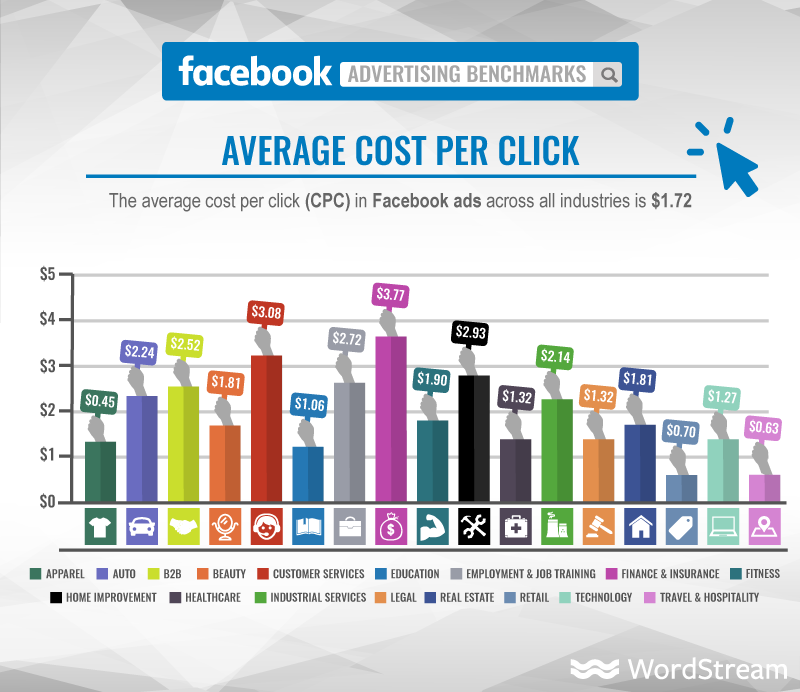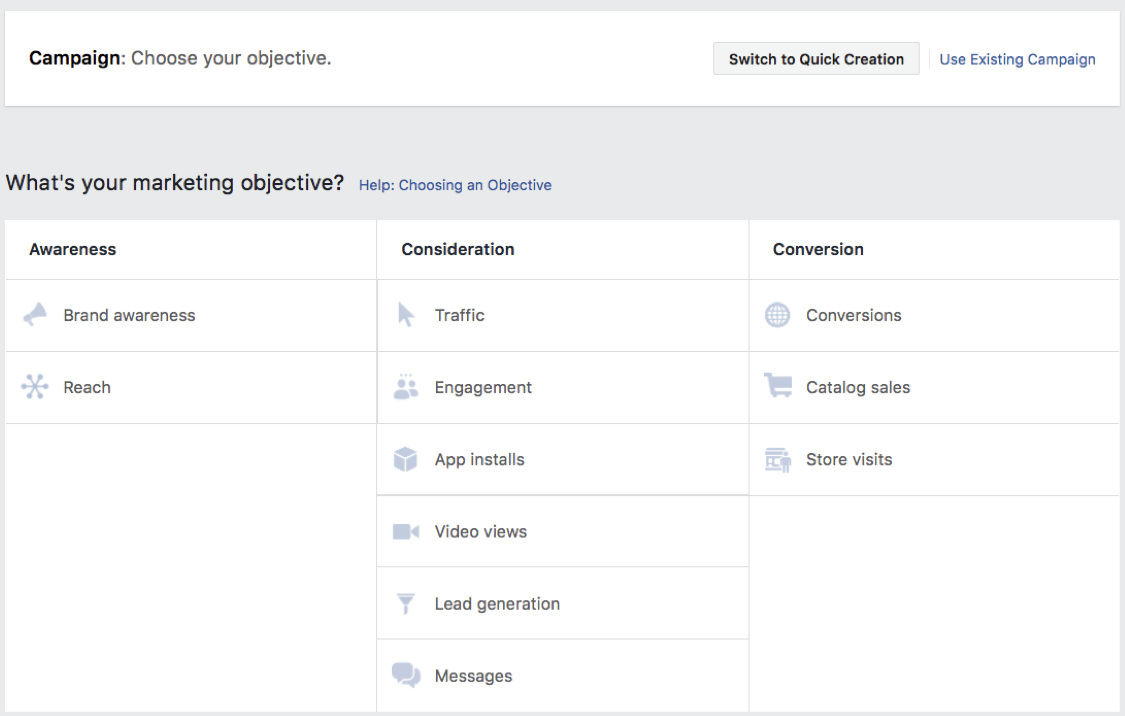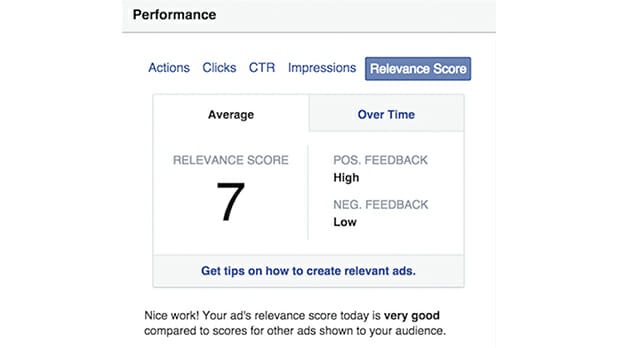Here’s the deal: Facebook advertising does not have a set cost. It’s all based on competition – what you’re willing to spend to get noticed compared to other businesses competing for the same attention.
Tons of factors contribute to exactly how much Facebook ads cost, including your industry, how big your target audience is, how effective your ad copy and image are, and how competitive the ad is (based on your industry and the size of your audience).
In the U.S., Facebook advertising cost per click (CPC) typically ranges from $0.31 to $0.61 or more. According to Hootsuite, cost per thousand impressions (CPM) comes in at about $7.19. But that’s a pretty grand simplification of the answer to, “How much do Facebook ads cost for small businesses?”
The Average Cost of a Facebook Ad
When you own a small business, the cost of a Facebook ad (how you bid on ads and how high (or low) set your advertising budget) is really dependent upon who you want to reach. Compared to your big brand competitors, you’re likely trying to target a pretty small group of individuals within a specific geographic radius.
Facebook ain’t no dummy, so they help small businesses like yours target by city or zip code. This way, you’re less likely to waste your ad efforts on people too far away to take advantage of your business (unlike more traditional “shotgun style” marketing methods like print and radio, which blast your message as far and wide as possible).
However, you’re not the only small business in your neighborhood. So if you’re one of tens to even hundreds of say, locksmiths, in your area, your average cost of a Facebook ad may end up being more than that estimated $0.61 per click.
Here’s a better question to ask yourself: “What’s a good cost per click for Facebook ads?”
Here’s how much each industry paid, on average, for Facebook ads at the end of 2017.

If you own a boutique or retail store, or you work in travel and hospitality, consider yourself a lucky duck. Those industries are paying anywhere from $0.45 to $0.70 per click, on average.
Conversely, if you work in finance, consumer professional services or home improvement, prepare yourself to chip in at a higher rate. These industries pay between $2.93 and $3.77 per click, on average.
Am I Overpaying for Facebook Ads?
The industry breakdown above should help you benchmark whether or not you’re overpaying for Facebook ads. If you are, here are some reasons you might be spending more than you should.
You don’t know how to bid on Facebook ads.
Knowing how to bid on Facebook ads, particularly when you’re a small business, is crucial. On Facebook, you can bid on one of two consumer responses to your ads – 1) clicks, or 2) views. In digital marketing, we refer to those metrics as:
- Cost Per Click (CPC) – cost per 1 click through to your website or landing page
- Cost Per Mille (CPM) – cost per 1,000 views (impressions)
Like Google AdWords, your bid and daily budget determine how much you’ll end up spending on Facebook advertising. But generally speaking, the biggest difference between these two digital advertising platforms is that Facebook ads are slightly cheaper than typical Google Adwords campaigns.
When it comes to how much Facebook ads cost, adjusting your bid affects your ad performance. The higher the bid, the higher the likelihood your ad will get shown, especially if you’re competing in a fairly crowded space among other local businesses. If your ad isn’t getting shown often enough to reach the budget you set, consider increasing your bid. Conversely, the lower your bid is, the lower the chance is you’ll appear. But, you’ll also pay less per click. If you’re reaching your budget without issue, it could mean your bid is too high. So lowering your bid could help you stretch your dollars even further.
You’re choosing the wrong ad objective.
Another reason you could be landing above the average cost of Facebook ads is if you’ve been haphazardly choosing your marketing objectives within Facebook’s Ad Manager.
Objectives are grouped into three buckets, with more specific objectives to choose from within each group.

Per Facebook’s direction, here’s what each marketing objective means.
- Awareness: Ads with the Awareness objective build top-of-mind awareness and interest in your product or service.
- Consideration: Ads with the Consideration objective get people to start thinking about your business, product, or service, and look for more information about it.
- Conversions: Conversion ads encourages people to carry out a specific action or purchase your product or service.
The awareness objective is great for businesses that are just starting out, have really immediate and frequent sales cycles (like restaurants), or have much longer sales cycles that require a lot of nurturing prior to purchase (like home improvement companies). The consideration objective is excellent for businesses that have a really broad target audience and face high competition. Lastly, if you feel like the average amount of consideration before purchasing your product is pretty low, or your website does a great job of converting consumers into customers, choose the conversions goal.
Pro tip: If your goal is conversions (e.g. a click through to your website or a “Buy Now”), bid based on cost per click (CPC) instead of cost per impressions (CPM). That way, Facebook will know to only show your ad to people who are likely to act and convert based on your expectations.
You’re ignoring your Facebook relevance score.
Facebook’s relevance score is a measure of how engaging (and well, relevant) Facebook deems your ad. They calculate relevancy based on what a consumers does with your ad after they see it.
What’s a good Facebook relevance score? The higher your relevance score, the cheaper your ads. And according to Facebook, a good score is anywhere from 7-10, with 10 being as “relevant” as you can get. (Go you!)

Why does a good relevance score matter? Facebook will show your ad more frequently, so you’ll reach more people than you would if you had a lower score. Translation: You’ll stretch your budget and improve the return on your investment by showing ads to only those who engage at higher rates.
Relevance score is mostly based on how well you achieve the marketing objective you set earlier. The better your ad achieves that goal, the higher your score. Conversely, if your ad is frequently hidden or reported by viewers, or if it fails to get clicks, your score will go down.
Here’s Facebook’s example for how a local pizza shop would use relevance score:
“Say, for instance, you own a pizza shop and want to run a campaign that drives people to order through your website. Achieving the desired outcome — in this case, driving sales online — is ultimately more important than your relevance score. If you have an average score but your ad is working, you may not want to change anything. Or you may consider tweaking the ad to see how you can get lower cost of delivery by improving the relevance score. Or you might monitor your relevance score, along with the sales you’re driving, to learn when it’s time to update your campaign.” – Facebook
There are a few ways to improve your Facebook ad relevance score.
- Know your audience. Choose images and ad copy they’ll understand and relate to.
- Make sure you choose the right marketing objective when you set up your ads.
- Create content that’s friendly and engaging. Avoid industry jargon, and spice it up where able!
Your relevance score will change over time as people interact with your ad. So monitor it closely, and adjust based on how it increases and decreases based on your efforts.
You’re not testing and optimizing your Facebook ads.
If you start from scratch every time you set up a Facebook ad campaign, you’re missing a huge opportunity to test and optimize your ads. By reinventing the wheel each and every time, you’re losing the chance to understand what was working in each ad and what could have been improved.
Instead, try A/B testing different versions of your ads. For example, images can be the first thing to catch consumers’ attention to your ad. So test images against one another, with all other variables (like copy, call-to-action buttons, and links) the same. After running the two ads with different images for a couple of weeks, continue only running the ad with the image that helps your ad achieve its goals more frequently. And so on, and so forth. You can run similar tests with your copy, buttons and links, as long as you only A/B test one variable at a time.
You’re not asking for help.
If social media marketing is a central part of your small business, optimizing your Facebook ads and saving on cost per click is a big, big priority. So you may want to enlist expert help to draft quality posts and even integrate your social media with your other marketing activities. Give Thryv a look – we can help.
Image sources: www.Facebook.com





